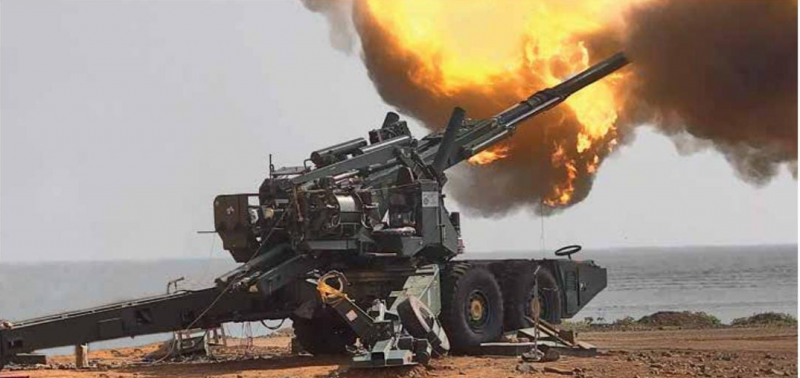
China tested its new vehicle-mounted howitzer during a live-fire exercise in the Gobi Desert on July 5. Given the renewed significance of artillery as a result of the ongoing Ukraine War, which has prompted even the US Army to prioritise long-range fire capability, the most recent howitzer test is crucial.
In order to test target effectiveness at great distances, the new howitzer fired long-range shells at targets more than 30 kilometres away during the drill.
According to the CGTN report, the new howitzer has a new control system that enables one-click firing and a high level of digitization. Which howitzer was employed was not mentioned in the report.
The new howitzer is also said to have automatic adjustment and semi-automatic loading, both of which significantly shorten response times.
The PLA's most recent howitzer test comes as China's closest ally, Russia, is fighting in the ongoing conflict in Ukraine, where the Russian military is continuing to advance thanks to a massive deployment of its artillery guns that are continuing to pound Ukrainian positions.
Artillery duel in East Ukraine
The current theatre of the Russia-Ukraine conflict is the Donbas region of eastern Ukraine, where both armies have deployed their long-range artillery arsenals, which include Soviet-era and some domestically produced systems as well as, in the case of Ukrainian forces, Western-made howitzers. Nevertheless, the Russian military appears to be winning the artillery duel based on recent steady advancements.
It might be as a result of the peculiar strategy used by the Russian military when it comes to using artillery as the main combat arm on the battlefield. The traditional use of artillery as a combat support force for ground forces engaged in "manoeuvre warfare" or "fluid" warfare is incompatible with this strategy.
According to a recent article in the EurAsian Times, it entails the Russian ground forces assisting the artillery by driving the adversarial forces into kill zones before ordering artillery strikes against them.
The ability to launch long-range fire has become more crucial in modern warfare as a result of the Russian military's success in using artillery to ensure a resounding victory.
Most militaries, particularly those of Western countries, prioritised "aerial" dominance prior to the Ukraine War. Similar to this, Russia anticipated first securing Ukrainian airspace before occupying its territory.
Lessons Learned From The Ukraine War
General Patrick Sanders, the head of the UK Army, said of the conflict in Ukraine, "It takes an army to hold and regain territory and defend the people. Deterrence takes an army. We would probably be outnumbered and fighting valiantly if this battle broke out.
In June, he was a speaker at the Royal United Services Institute's (RUSI) Land Warfare Conference. He explained that land will continue to be the dominant domain because standoff air, maritime, or cyber fires are unlikely to dominate on their own.
Similar statements were made by senior US army officials at a hearing held by the US House Armed Services Committee (HASC) in May.
When asked by the HASC Chairman to name the systems that will help the army win a battle like the one taking place in Ukraine, the US Army Secretary Christine Wormuth and the service's Chief of Staff General James McConville both responded right away that Long-Range Precision Fires (LRPF) systems are essential.
So the Western bloc overconfidence is cleared that aerial warfare alone is not a good way to prove the dominance of one army and one country in the war ground. they have to refurbish the 100+ years old artillery warfare also